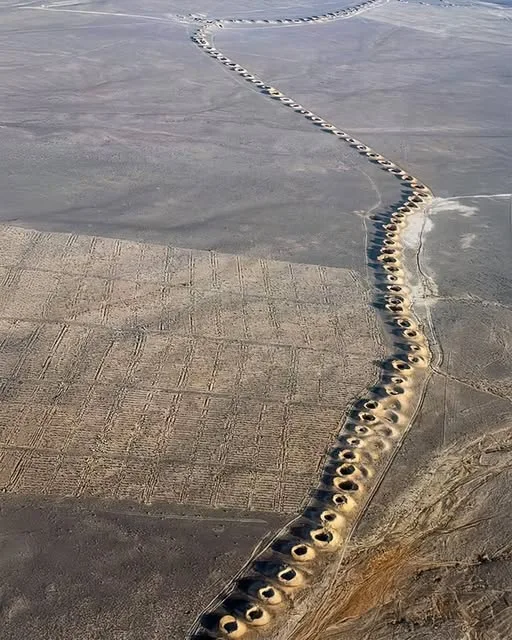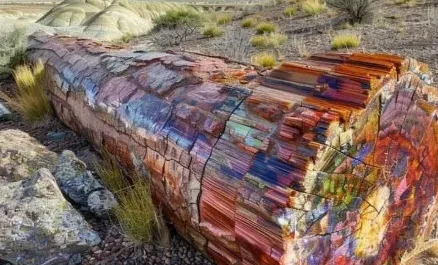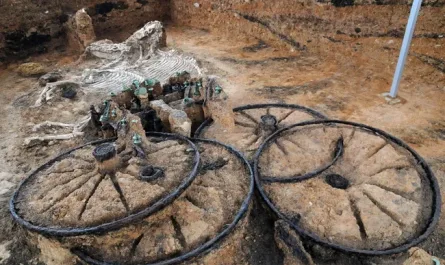The Qanat: Ancient Iran’s Ingenious Underground Water System
Around 3,000 years ago, in the arid landscapes of what is now Iran, ancient engineers developed the qanat, a groundbreaking underground water transport system that sustained life in one of the world’s harshest climates. This innovative network of tunnels, wells, and channels brought water from distant aquifers to farms and communities, transforming barren regions into fertile oases. With its ventilation shafts enabling laborers to excavate by hand, the qanat remains a testament to ancient Persian ingenuity. As of 2025, many qanats are still in use, recognized as a UNESCO World Heritage marvel for their enduring impact on sustainable water management.

Origins and Purpose
The qanat system, believed to have originated in Persia (modern-day Iran) around 1000 BCE, addressed the critical challenge of water scarcity in the region’s hot, dry climate. By tapping into groundwater sources in mountainous areas, qanats delivered water across vast distances—sometimes tens of kilometers—to settlements and agricultural fields. This technology was essential for irrigation, drinking water, and sustaining life in areas where surface water was scarce or nonexistent.
The qanat’s development is attributed to the Achaemenid Empire (550–330 BCE), though some evidence suggests earlier use in Mesopotamia. Its spread across the Middle East, North Africa, and parts of Asia underscores its effectiveness, with variants appearing in Oman (falaj), Spain (acequias), and even China (karez). The system’s design minimized water loss through evaporation, making it a sustainable solution for arid environments.
Engineering and Construction
A qanat is a gently sloping underground tunnel that channels water from an aquifer, typically in a hilly or mountainous area, to lower-lying fields or villages. Its construction was a remarkable feat of engineering, requiring precise planning and manual labor. Key components include:
- Mother Well: A deep vertical shaft dug into an aquifer or water table, often in the foothills, to access groundwater.
- Tunnel: A subterranean channel, sloped at 1:1000 to 1:1500, allowing water to flow by gravity over long distances. Tunnels could extend up to 70 kilometers, though most were shorter.
- Ventilation Shafts: Vertical access shafts, spaced 20–100 meters apart, provided air for laborers during excavation and maintenance. These shafts, visible as a line of circular openings across the landscape, also allowed debris removal and water monitoring.
- Outlet: The point where water emerged for irrigation or domestic use, often feeding canals or reservoirs.
Construction was labor-intensive, performed by skilled workers called muqannis who used hand tools to dig through rock and soil. The ventilation shafts, critical for air circulation, made it possible for workers to labor underground for extended periods, sometimes years. The precision required to maintain the tunnel’s gradient—too steep, and erosion would collapse it; too flat, and water wouldn’t flow—demonstrates advanced hydrological knowledge.
Cultural and Environmental Impact
The qanat transformed arid regions into habitable and agriculturally productive areas, enabling the growth of crops like wheat, barley, and fruit orchards, as well as supporting urban centers like Yazd and Kerman. By delivering water without pumps or external energy, qanats were sustainable, relying solely on gravity and the natural topography. They also fostered communal water management systems, with villages sharing maintenance responsibilities and allocating water equitably.
The system’s environmental benefits included minimal surface disruption and protection against evaporation, critical in Iran’s desert climate where summer temperatures often exceed 40°C (104°F). Qanats also supported biodiversity by creating micro-oases, attracting wildlife and sustaining ecosystems in otherwise inhospitable areas.
Preservation and Modern Relevance
As of 2025, many qanats remain operational in Iran, particularly in Yazd, where they continue to supply water to traditional farms and gardens. In 2016, UNESCO recognized the Persian Qanat as a World Heritage site, citing 11 representative systems for their “exceptional testimony to cultural traditions and civilizations.” These include the Qasabeh Qanat in Gonabad, one of the oldest and deepest, reaching 300 meters underground and stretching over 33 kilometers.
However, qanats face challenges. Modern groundwater pumping, urban expansion, and neglect have led to the abandonment of some systems, with estimates suggesting only 20,000–30,000 of Iran’s original 50,000 qanats remain active. Climate change, causing reduced aquifer recharge, further threatens their viability. Conservation efforts, supported by Iran’s Ministry of Cultural Heritage and international organizations, focus on restoring historic qanats and promoting their sustainable use. Technologies like drone mapping and geophysical surveys are aiding in their study and maintenance.
The qanat’s influence persists in global water management discussions, with its principles inspiring modern sustainable irrigation projects in arid regions. Posts on X highlight ongoing fascination, with users praising the “genius of ancient engineers” and comparing qanats to “underground rivers” that still sustain life.
Challenges and Future Prospects
Maintaining qanats requires skilled labor, a dying art as younger generations pursue urban careers over traditional muqanni work. Earthquakes, common in Iran, can damage tunnels, while over-extraction of groundwater by modern wells lowers water tables, drying up some qanats. Restoration projects, such as those in Yazd, aim to preserve these systems, but funding and expertise remain limited.
Future efforts may integrate qanats with modern technology, such as solar-powered monitoring systems to track water flow, ensuring their relevance in a changing climate. Educational initiatives are also promoting the qanat’s cultural and ecological value, encouraging tourism to historic sites.
Conclusion
The qanat, developed 3,000 years ago in ancient Persia, is a monumental achievement of human ingenuity, transforming arid landscapes into thriving communities. Its underground tunnels and ventilation shafts reflect the skill and perseverance of Bronze Age engineers, whose legacy endures in Iran’s deserts. As a UNESCO World Heritage site, the qanat continues to inspire awe and inform sustainable water management practices. In a world grappling with water scarcity, the qanat stands as a timeless reminder of how innovation and harmony with nature can sustain life in the harshest environments.





